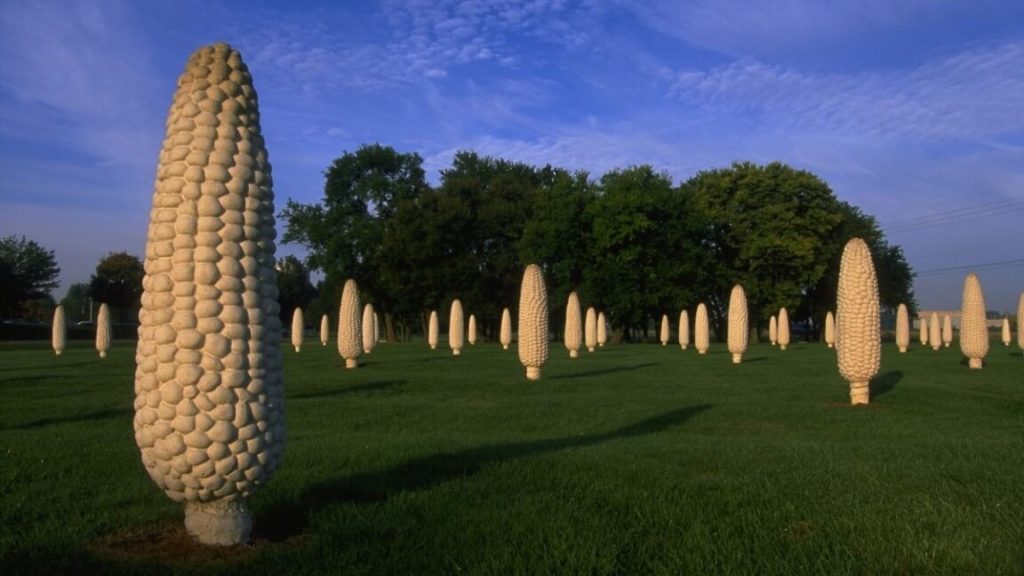Stonehenge is famous across the world. Perhaps less famous, but no less important, is Ohio’s “corn Stonehenge.”
Completed in 1994, Dublin Arts Council commissioned artist Malcolm Cochran to create the public art installation.
According to the Arts Council website, the giant corn monoliths were created to symbolize the “history of the community’s farming legacy and serves as a memorial to rural landscapes.” Five bronze plaques accompany the corn Stonehenge and trace the history of the state’s farming industry.
“Cornhenge” stands on land previously owned by farmer Sam Frantz. Frantz worked the cornfield between 1935 and 1963 and worked closely with Ohio State University to develop new corn hybrids.
Cochran, who was also a professor of sculpture at the university, said of the work, “There is a serious side to the work as well: My choice of white concrete was deliberate to mimic, in a subliminal way, the rows of crosses in Arlington National Cemetery.”
He continued, “It is ultimately a memorial to agriculture and, by extension, to a way of life and a regional identity that been replaced by corporate office complexes and housing developments.”
The sculpture is comprised of 109 concrete ears of corn that stand upright in rows designed to mimic rows of corn. Each ear is 6 feet, 3 inches (1.9 meters) tall and weighs 1500 lbs (680 kg).
According to Atlas Explorer, Dublin residents weren’t happy with the installation when it was first unveiled. It reported locals saw it as “an ironic joke: tax dollars spent to honor food farmers ending up creating inedible food.”
However, feelings have changed over the course of the 25 years “Cornhenge” has existed. It has become popular with tourists and locals alike, with some people choosing to have their weddings in the field, now known as Frantz Park.

Plant Sculpture
Dublin’s corn Stonehenge is a unique take on plant sculpting, which usually involves carpeting a steel frame with plants to create “living sculptures.”
Ottawa is particularly well known for this art form, which is different from traditional topiary.
Its 2017 Mosaiculture Garden Festival was originally conceived to celebrate Canada’s 150th Anniversary. The event featured more than 3 million plants used to create 33 unique sculptures representing each area of Canada.
The festival, which was organized by Mosaïculture Internationales de Montréal, proved so popular that it returned to Ottawa in 2018 for a second year.


